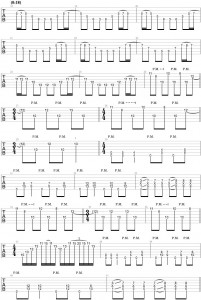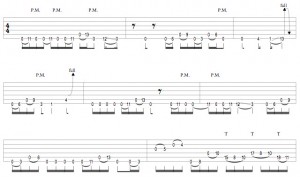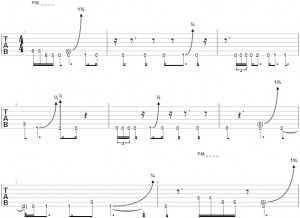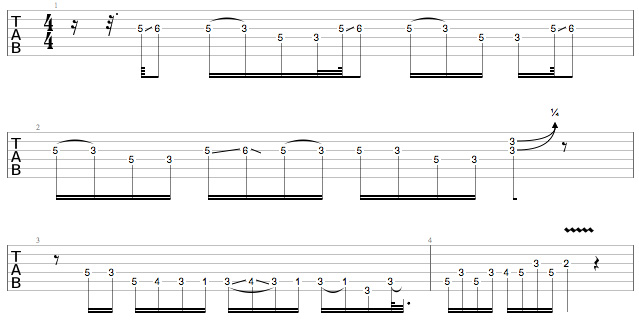Unbreakable Riff
[Marc’s guitar is tuned to Drop-B for all examples in this Masterclass: B F# B E G# C#] This riff calls for left-hand flexibility to execute the minor 2nds in Measures 1 and 5, and right-hand versatility to execute the rapid shifts between those arpeggiated 2nds and the tightly muted chugging that surrounds them. Practice playing the open-string hammer-on to pull-off sequence from Measures 2 and 6 separately until it’s fast and clean, then integrate it with the rest of the riffing.
Veil Of Maya – Unbreakable – Riff
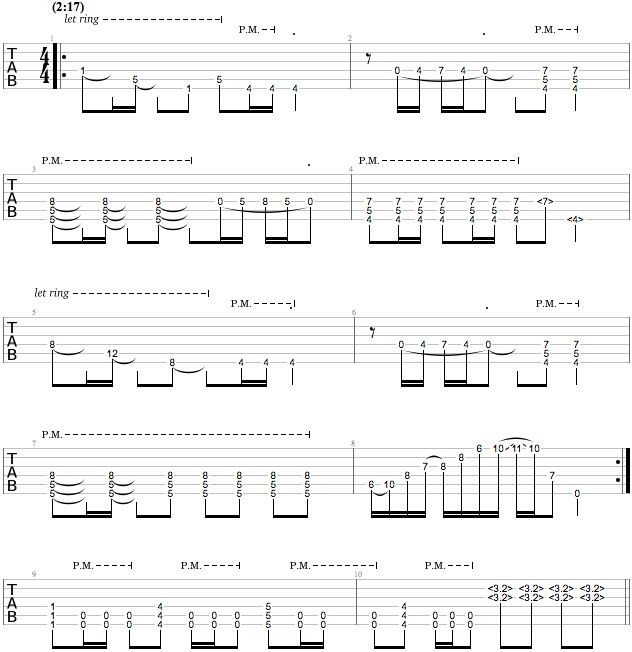
Unbreakable Breakdown
‘That’s all muscle memory. I don’t think about any breakdowns at all when we’re playing – we’re just kind of rocking out when that comes in. I think more about nodding my head on beat than actually playing the notes, because the notes just kind of happen. After you teach yourself not to think about it, you just automatically play it.’
This figure is difficult to follow at first, because though the pattern that makes up the first two Measures does repeat, it falls against the pulse in a different way each time and is even given an extra beat in Measure 4. Learn the full 8-bar figure as transcribed here at a slightly slower tempo than Marc plays it. Slowing it down too much will make it difficult to keep track of the repetitions, but slowing it slightly will help you process the rhythmic groupings as you play them.
Veil Of Maya – Unbreakable – Breakdown
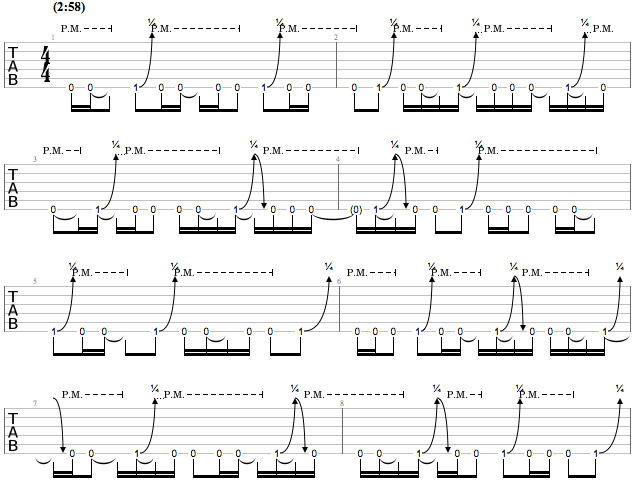
[id] Intro & Breakdown
‘I actually wrote the lead on a piano, and then I would have that looping. The rhythm is essentially a pattern of 4-2-1-3 [where each digit represents a number of attacks, and the last is held for twice as long as the others], and then after 4 bars of it we start over. That’s kind of our trick for a few of our breakdowns – we make an ostinato pattern that’s shorter or longer than 4/4 and keep it going for 4 or 8 bars, so that it makes two different rhythms on top of each other. We don’t think about it technically. Me and Sam [Applebaum], our drummer, see eye-to-eye on rhythms. We keep it going until it feels like we should start it over.’ Like the ‘Unbreakable’ Breakdown, slow this figure down slightly at first to hear the pattern for yourself. This one is easier to follow, as it does repeat exactly each time.
After the full 4-bar cycle has repeated twice, Marc expands his chord voicing. ‘I’m playing a major 3rd against the toms in the beginning, and then when the kick drum comes in I play the 4th under it to make it sound like a power chord tuned a string lower, so that the bass can hit the lower string. Our bass player has a 7-string bass, so he can hit all the low notes that I can’t with a 6-string guitar, and then I can emulate [the sound of the lower power chord] with 4ths and palm mutes.’
Veil Of Maya – [Id] – Intro & Breakdown
![Veil Of Maya - [id] Veil Of Maya - [id]](https://guitarmessenger.com/wp-content/uploads/2011/02/Veil-Of-Maya-id.jpg)
Mark The Lines Riffs
Right out of the gate, ‘Mark The Lines’ challenges players with a flurry of alternate picking. In addition to synchronizing your hands, you may need to add some extra stretches to your practice routine to facilitate a clean reach between the 1st and 5th frets. Become comfortable playing this four-note descending line up to speed before you tackle the whole section, as it pops up frequently.
Veil Of Maya – Mark The Lines – Riffs

Mark The Lines Chords
‘That whole song doesn’t repeat at all – it’s just a big progression the whole time. I spent probably a year writing different parts of that song, because the only time I would write parts to that song is when I was feeling that depressed that that’s what was coming out.’ Begin your work on this section by familiarizing yourself with all of the chord voicings Marc uses here. As with many of his chords, there are stretches at the lower frets and broad, rich voicings near the 12th fret.
Veil Of Maya – Mark The Lines – Chords
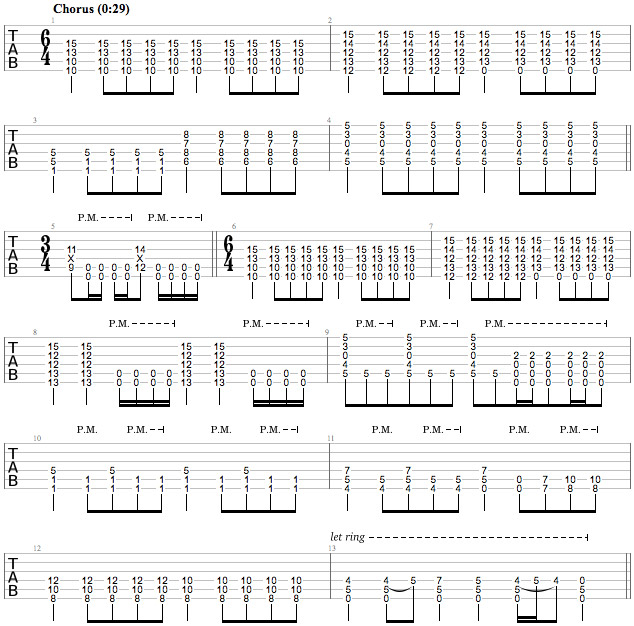
New Riff
This slippery workout shares many of its challenges with the Verse of ‘It’s Not Safe To Swim Today’ from the first Masterclass. The riff is a barrage of 16th note phrases that bounces between the bottom four strings. Since there is little repetition in this active piece, break it down by phrase. The first phrase makes up Measure 1, while the second extends through the first note of Measure 3. The third phrase continues through the first note of Measure 4, and the fourth and final phrase is the last 11 notes of the riff.
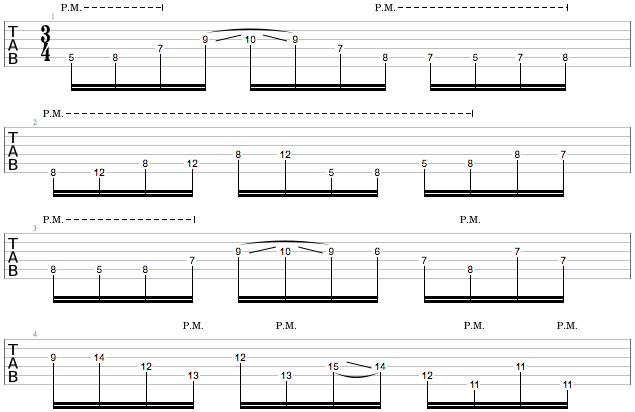
[Special thanks to: Chris Robinson for his excellent intro and camera work, Peter Boyle for his meticulous transcription work and Cigar Masters of Worcester, MA for their warm hospitality.]



